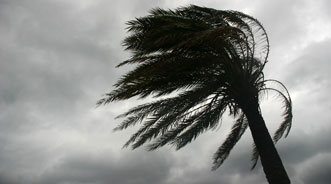Manheim Operations Navigate Through Hurricane Isaac

It’s been a busy week for Manheim operations in the path of Hurricane Isaac, as the company began preparing its auction facilities for the storm as early as Monday.
In a message sent to Auto Remarketing late Thursday, Kyle Ohman, Manheim’s market vice president for the Southeast, explained how the company prepared for the storm that state and federal officials said came ashore as a Category 1 hurricane and dumped several inches of rain while leaving more than 900,000 homes and businesses without power in Louisiana alone.
Ohman said, “Our goal was to ensure that our employees were fully aware of the storm and made plans to ensure their safety, the safety and security of our auctions and how to communicate with us through our company alert system.”
Ohman noted that the company’s preparations started in Florida as Manheim Pensacola management closed the facility on Tuesday afternoon.
“As the storm quickly moved past Florida, we resumed operations on Wednesday,” Ohman said. “We reached out to all of our customers who conduct business at these locations, ensuring they knew our plans so they could plan accordingly.”
Manheim New Orleans and Manheim Mississippi — locations in the more highly affected areas — experienced a bit more of Isaac’s impact.
At Manheim New Orleans, Ohman said management closed operations on Tuesday afternoon as well as Wednesday “as employee and customer safety were our greatest concerns.”
Manheim New Orleans reopened for business on Thursday.
At Manheim Mississippi, management modified business hours on Wednesday but full operations came back a day later.
“To support our customers, we ran our regular Thursday sales,” Ohman explained. “They requested that we hold the sale so they could conduct business and we wanted to be there for them.”
As far as Manheim’s Total Resource Auctions sales in Mobile, Ala., and Lafayette, La., Ohman indicated management ran its regular Wednesday sales.
In preparation for possible disaster relief needs for Manheim employees in the area, Ohman mentioned the human resources team at the corporate office in Atlanta shared relief resources and information last week with Gulf-area HR managers.
“As a division of Cox Enterprises, Manheim employees will have access to the Cox Employee Disaster Relief Fund (CEDRF) should the need arise,” Ohman noted. “Our CEDRF team in Atlanta is standing by with immediate assistance for all Manheim employees as needed through the end of the week.
Manheim reiterated CEDRF is a 501(c)(3) charitable organization funded by donations from Cox employees to provide financial assistance to employees with unexpected needs resulting from a disaster.
While the storm did not reach the strength of Hurricane Katrina that ripped the region seven years ago, Hurricane Isaac still left a significant mark.
According to the Louisiana Public Service Commission, 901,000 homes and business — about 47 percent of the entire state — was without electricity.
Gov. Bobby Jindal said much of south Louisiana picked up at least five to seven inches of rain from Isaac, with some places inundated with as much as 12 to 16 inches by Thursday.
Jindal cautioned that a significant portion of the state was going to feel storm effects.
“This is a very slow moving storm which means there will be sustained periods of heavy wind and heavy rain,” Jindal said.
Officials from the National Hurricane Center in Miami indicated Isaac slowly moved more than 160 miles northwest of New Orleans by midday Thursday. However, the storm still packed sustained winds of 40 miles per hour along with torrential downpours as it slogged toward Arkansas.
“Isaac is expected to produce total rainfall accumulations of seven to 14 inches with isolated maximum amounts of 25 inches possible over northern and eastern Louisiana, much of Mississippi, southwestern Alabama, Arkansas and into southern Missouri through Friday,” center forecasters said.
“These rains could result in significant lowland flooding,” they emphasized. “The heavy rain potential will be spreading eastward this weekend into portions of the Midwest and Ohio Valley regions.”
Once the storm finally passes, the wholesale industry likely will be bracing for another influx of flood-damaged units.
When vehicles are flooded, unscrupulous individuals may try to take a title to another state and get it washed. Each state tends to brand vehicles differently. This can be a big challenge for the used-car industry that must keep on the lookout for such units.
“Once owners of damaged cars settle up with their insurance companies, vehicles are sometimes refurbished and resold, usually to an unsuspecting buyer in a state unaffected by the disaster,” stated Ron Montoya, consumer advice associate with Edmunds.com. “Electrical and mechanical problems can then surface long after the seller is gone, leaving the new owner with an unreliable car and no recourse against the seller.”
Isaac’s impact on the region might not be as much as what happened here seven years ago.
Carfax’s Chris Basso estimated that Hurricanes Katrina, Rita and Wilma combined damaged 600,000 vehicles when these storms all pounded the U.S. in 2005.
Basso told Auto Remarketing last September about the long-time ramifications on the wholesale market from those storms.
“We’re still seeing reports of those cars coming out,” Basso noted. “Even six years later, people are still feeling the effects of Katrina cars.”

 View The Latest Edition
View The Latest Edition

